StarCraft II hits stores on Tuesday, July 27. Avoid the most common newbie mistakes so you can crush the campaign mode and beat your buddies.
Looking forward to StarCraft II? You're not alone. The original version of StarCraft has sold more than 11 million copies worldwide (putting it behind only World of Warcraft and The Sims in sales), it has inspired its own course at the University of California, Berkeley, and it has even become a major national sport in South Korea. Now, after a five-month period of private beta testing, version II is ready for release.
Before you lead the charge against the Zerg, however, you'll want to brush up on your skills a bit. Here's how to avoid making the most common newbie mistakes--and save yourself from a butt-whupping. Be aware, too, that you can skip the launch-day lines by predownloading the client. Just log in to Battle.Net and pay on launch day to start playing immediately.
Getting Started With StarCraft II
If you've played only a few single-player missions in the original StarCraft, there are a few basic things you need to know about the game.
Use Attack to move units. When you select your units and order them to Move, they'll go to the specified destination but ignore any enemy units they pass along the way. To avoid this suicidally single-minded behavior, select your units and use the Attack command to send them to the desired location. They'll reach their destination just as quickly; but if they run into an enemy ambush, they'll defend themselves.
Try the A.I. Don't dive into the ranked mode games--you'll get stomped, and you won't learn much from the experience. Instead, open your own Custom Game and click the Add A.I. button to add a CPU-controlled player. Set the difficulty level to Very Easy, and you'll have all the time in the world to learn the technology trees and to practice deploying your units.
Pick a race and play with it for a while. Each of the playable races in StarCraft II is very, very different: Protoss units are expensive but hard to kill, Zerg units can swarm across the map with cheap, disposable units, and Terrans can control the map with imposing fortifications and powerful ranged weaponry. Try each of them, but then pick the one you like best and stick with it for a while--it's easier to learn how to play one race well than to master three of them at once.
Avoiding Common StarCraft II Newbie Mistakes
If you completed the original Starcraft campaign and maybe played some games with your friends, you probably already knew all of the preceding tips. However, you can squeak by in campaign mode despite making a few common mistakes or falling into a few bad habits; those same mistakes and habits will get you killed online.
Keep an eye on your opponent. If you know what your opponent is doing, it's easier to devise an effective counterstrategy. Send an SCV out to look for the enemy maybe a minute into the game, and conduct additional surveillance periodically. Sacrifice overlords, build observers, use ComSat scans, whatever--few things are as frustrating as building a strong ground army and then losing because your opponent made a single air unit that you had no answer for.
Use the keyboard commands. Ordering your units around with the mouse is slow. Each command has a keyboard shortcut, such as A for Attack and B for Build. Get used to the keyboard commands, and your army will feel like a well-oiled machine.
Build lots of first-tier combat units. New players often try to build up their tech tree as quickly as possible because they want the big flashy stuff--and just as often lose to a guy who builds a handful of cheap attack units and attacks early. Think of it this way: you have to earn those big flashy units by living long enough to get them without losing, and for that you need Zerglings/Zealots/Marines.
Spend your money as quickly as possible. Money in the bank is money that isn't winning you the game. If you have more than 300 to 400 minerals on hand, you're not spending fast enough.
Don't worry about towers. Bunkers, Missile Turrets, Photon Cannons, Spine Crawlers, and Spore Crawlers--they're all great until someone walks right around them and kills all your dudes. Use them sparingly--a less-powerful unit that can move is often far more useful than a powerful one that can't. If you see your opponent building a bunch of towers early on to protect their base, relax--it means they're spending all their money on towers instead of on an army or on new technology.
Don't forget the detector. You'll want at least one unit that can move and detect cloaked units--Protoss Observers, Zerg Overseers, or the Terran Raven (or ComSat Sweep). You don't want to lose just because your opponent built one Dark Templar.
StarCraft II Strategies for Veterans
Moving up in the ranked matches and having problems? Here's a few extra tips to step up your game.Playing Terran? Block off your ramp. The Terran Marine loses to the Zergling and the Zealot in close-quarters combat, so if your opponent is playing as a Zerg or Protoss commander, you should use your buildings to block off the main entrance to your base.
Two Supply Depots and a Barracks should do fine, though using two Barracks makes for more Baneling-resistant wall. Be careful, though: You don't want your Marines to spawn outside the wall, or they'll get butchered; so set the Rally Point for the Barracks to a spot inside the wall, and they'll be fine. When you want to open the wall, just select the Supply Depot and clickLower.
Take advantage of Control groups. Managing a large army is a pain. You can assign separate keyboard shortcuts to frequently used units and buildings. Just select the unit or building and press Ctrl + any number you want to assign to it, and thereafter you'll be able to select the desired unit or building simply by pressing that number key. This arrangement is very useful when you want to build units without scrolling all the way back to your base, or when you want to issue different orders to different units.
Build more supply depots. Any time you spend waiting for completion of a Supply Depot so you can build more units is time that your opponent is spending building more units. To avoid this kind of downtime disadvantage, build another Supply Depot whenever you get close (within 4 food or so) to hitting your supply cap, .
Build more Barracks/Gateways/Hatcheries. The more unit-production buildings you have, the faster you can rebuild your army. And they typically don't cost much, either--a Zealot costs 100 minerals, and a Gateway costs 150.
Use the back door. Your guys will get killed entering the enemy base from the front. Each race has its own way of getting around blockades, and each map has its own surprise entrances and back-doors. Learn them, use them, love them.
Attack enemy workers. You don't have to challenge your opponent's army head-on. Harass the worker line, and your opponent will have a much harder time rebuilding the army or researching better tech--and you can catch the army out of position when it comes back to defend.
Start every game with 'gl hf' (Good Luck, Have Fun), and end every game with 'gg' (Good Game). This is a sign of StarCraft sportsmanship. No matter how crushing the defeat or how glorious the victory, you should do it.
Learn the Lingo
Die-hard StarCraft players have a few phrases that you'll need to know if you want to get better.Micro is short for Micromanagement--your ability to issue detailed orders to your units during combat. The better you are at micromanaging your units, the more mileage you'll get out of each individual unit in your army.
Macro stands for Macromanagement--your capacity to maintain a thriving economy, establish expansion bases, and rebuild your army. Both micro and macro skills are crucial, but beginner players should focus more on their macro skills first.
Build Order is a player's beginning game plan, similar to an opening in chess. Different build orders lend themselves to different strategies. Zerg players, for example, often like to invest in their economy early on by quickly building a second Hatchery; but if they're worried about an early rush, they might instead spend the money on more Zerglings or Roaches.
APM stands for Actions Per Minute--a measurement of how quickly you order your army around. Though having a high APM is great, giving the right orders is more important than giving lots of orders.
StarCraft II Required Reading
Hungry for more tips? Here's where you can go to become a pro.Blizzard's own Battle.net forums are a good place to start--a solid mix of newbies and veterans hang out there to ask and answer questions. If you're looking for people with a stronger competitive streak (and plenty of free time), however, drop by the Team Liquid home page and forums for a chance to chat with bona fide professional players, or read their Liquipedia II wiki for plenty of information on competitive StarCraft.
Visual learners, on the other hand, would do well to subscribe to HuskyStarCraft andHDStarCraft on YouTube. Not only do they regularly broadcast (and provide commentary for) matches between professional StarCraft II players, but they occasionally produce tutorial videos, as well.
If you're looking for a StarCraft II coach, Sean "Day[9]" Plott is about as close as you can get; in his Day[9] Daily online series, he systematically dissects and explains StarCraft II replays with the patience and detail of your favorite college professor. He doesn't focus exclusively on the pros, either--check the archive for episodes devoted to debugging lower-level play as well.
Feel free to post your strategies and questions in the comments!
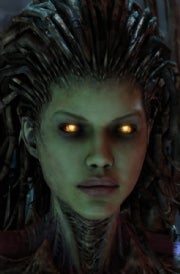
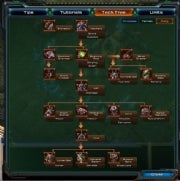
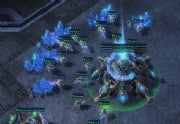
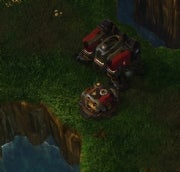
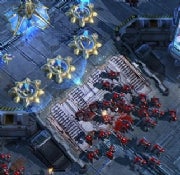
Comments
Post a Comment